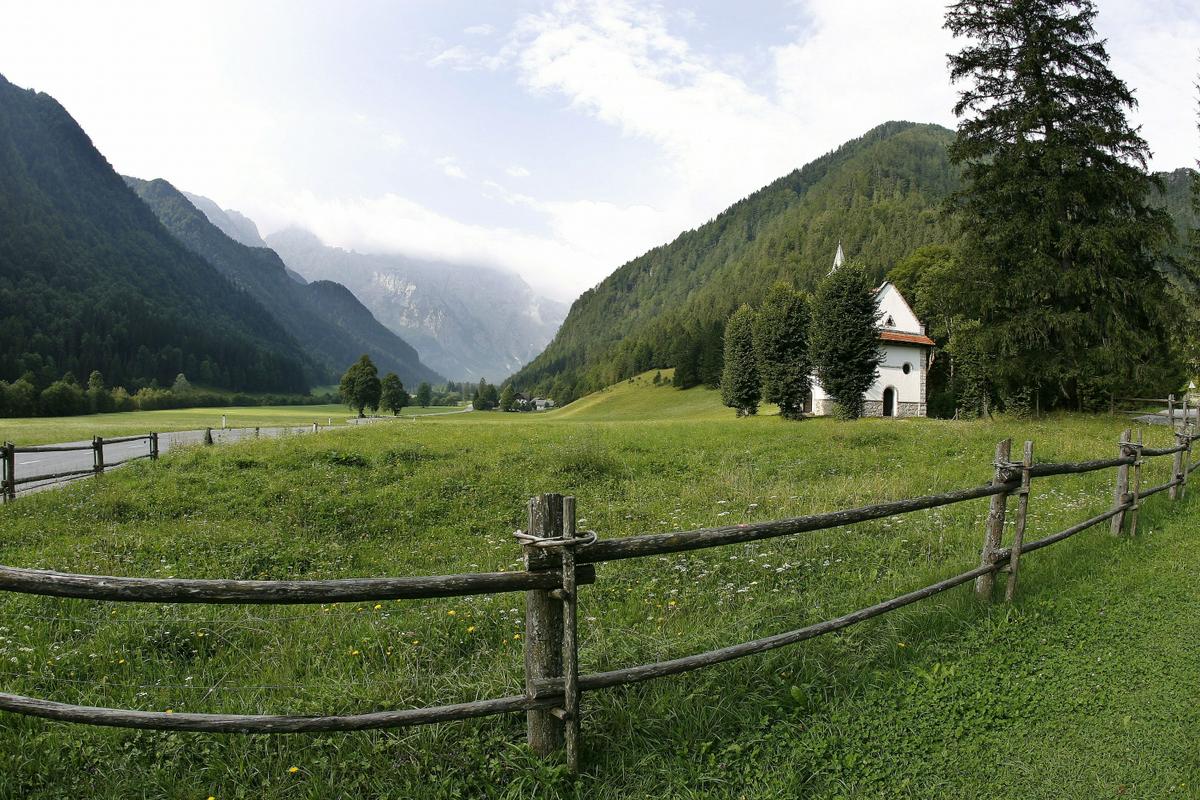
The northern half of Slovenia contains several glacial valleys, but one of the most beautiful also happens to be among the least visited. The Logar Valley in the Štajerska (Slovenian Styria) region is recognized as a Landscape Park, a special area protected because of its natural beauty and its traditional human settlements.
The valley, about seven kilometers in length, was carved out by a glacial during the last ice age, creating an impressive amphitheater surrounded by peaks that rise up to an altitude of 2000 meters and more. Vast forests hide several streams and waterfalls, of which Rinka and Palnek are the most well-known. A local stream known as Črna, meaning "black," was named after its dark color, the result of sedimentary clays from which it apeings to the surface.
Below the tree line, forests and pastures cover most of the Logar Valley; they are interspersed with solitary homesteads. Increasingly, many have been transformed into tourist farms. While still working the land, their owners are happy to welcome visitors who want to experience the mountain lifestyle and admire the local architecture: Wooden granaries known as "kašte" are among the traditional architectural features of the valley. In addition to farming, the area was once the center of charcoal production, and every summer several charcoal pits are brought back to life, giving curious visitors a chance to see a process that hasn’t changed much for centuries.
While farming has long been a fact of life in part of the Logar Valley, many high-altitude areas have been untouched by human habitation. This is the realm of the mountain eagle and such rare plants as the lady-slipper orchid, the Carniolan lily, and the Zois bellflower. At lower altitudes, the valley is the home of several exceptional trees, such as the frequently photographed Logar Linden, with a circumference of five meters, and a magnificent larch that may be as much as 300 years old.
The people of the Logar Valley have decided to embrace sustainable rather than mass tourism. In 1987, the area was declared a Landscape Park, and so far, tourism remains limited to tourist farms and small hotels such as the family-run Plesnik. By avoiding some of the errors made years ago in other Alpine valleys, locals hope to preserve both the nature and the traditional lifestyles that make Logar Valley one of Slovenia’s underrated jewels.

































































